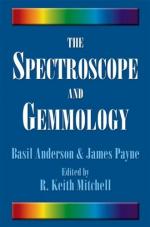|
This section contains 271 words (approx. 1 page at 300 words per page) |
Unlike so many inventions that are the result of fortunate accident, the ultraviolet camera/spectrograph was intentionally designed for a specific purpose: to record data yielded by space explorations. On its first mission aboard the Apollo 16 spacecraft, which touched down on the moon in April 1972, it fulfilled its purpose admirably. Among the images it provided were the first photographs of the ultraviolet equatorial bands of atomic oxygen that surround the earth. Four years later, aboard Skylab4, it tracked the movements of the comet Kohoutek.
The instrument was essentially a miniature observatory that acquired imagery and spectra at far-ultraviolet wavelengths. A Schmidt camera captured images of the scene. When the instrument was in spectrographic mode, the light captured by the Schmidt camera was instead routed through a dispersing element that split the light into distinct ultraviolet wavelengths. These wavelengths formed spectra that yielded information about the lunar surface,the Earth's atmosphere, the solar corona, and the stars and galaxy.
Developed at the Naval Research Laboratory in Washington, D.C., the ultraviolet camera/spectrograph was the work of two men: William Conway, who adapted the instrument for the Apollo 16 mission, and George Carruthers, who designed it. Carruthers, an African-American born in Chicago in 1940 and raised on that city's south side, constructed his first telescope at the age of 10. After receiving his Ph.D. in physics from the University of Illinois in 1964, he began a long career at the Naval Research Laboratory in the Rocket-Astronomy Program. For his development of the ultraviolet camera/spectrograph, the National Aeronautics and Space Administration (NASA) awarded him its Exceptional Scientific Achievement medal.
|
This section contains 271 words (approx. 1 page at 300 words per page) |


